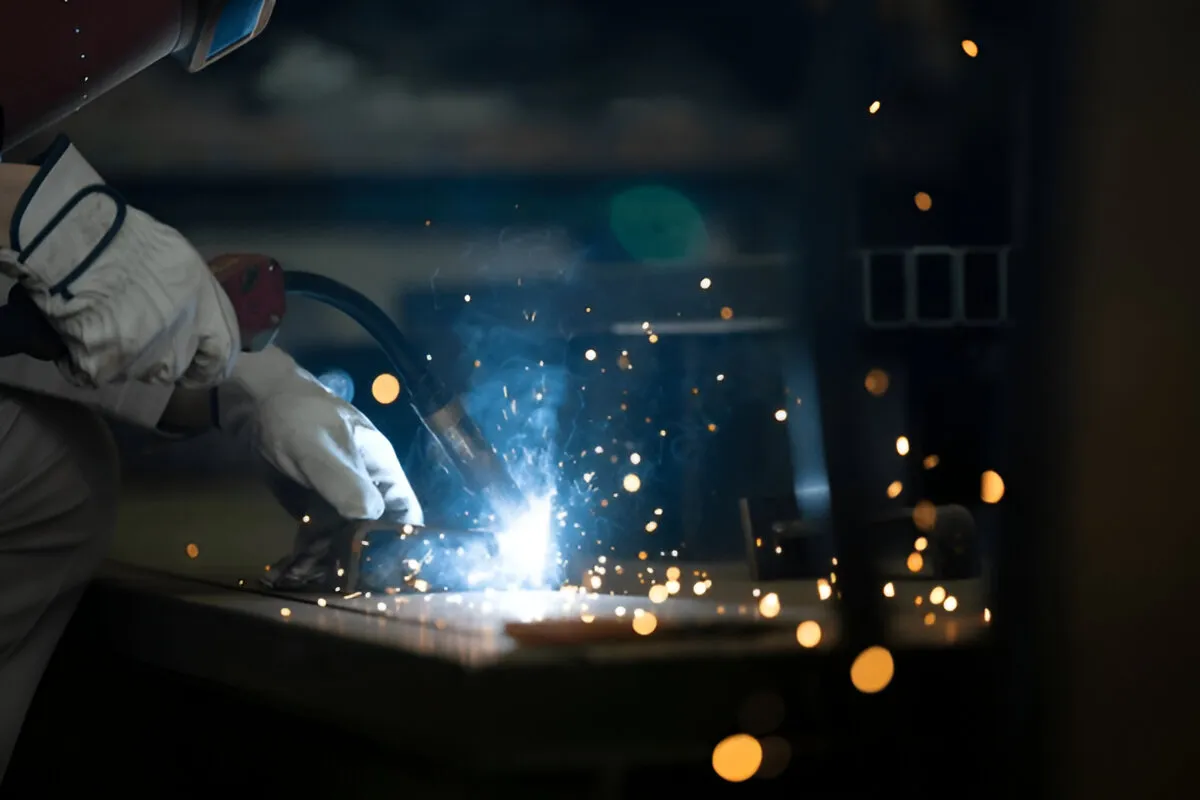Table of Contents
Key Takeaways:
- Welding is both an art and a science, requiring skill and knowledge.
- Different welding methods serve various applications and materials.
- Mastery of welding contributes significantly to the durability and quality of metal structures.
Understanding The Basics Of Welding
Welding, a cornerstone in metallurgy and construction, involves joining metals or thermoplastics by melting the workpieces and adding a filler material to form a strong joint upon cooling. One of the advanced methodologies that have gained significant attention due to its precision is TIG welding techniques. These techniques are distinguished by their ability to produce high-purity welds, particularly valuable in applications where a clean, precise finish is paramount.
The selection of the appropriate welding method is an intricate process, often requiring a deep understanding of materials and the ability to manipulate various parameters, such as temperature and speed, to suit the specific properties of the joined metals. Proper training and hands-on experience are crucial for welders striving to produce durable and reliable welds that meet industry standards.
Types Of Welding Methods
- Shielded Metal Arc Welding (SMAW): Stick welding is one of the most traditional welding methods. It’s known for its simplicity and versatility. It’s widely used in industrial fabrication and construction applications.
- Gas Tungsten Arc Welding (GTAW/TIG): This technique is renowned for providing high-quality welds with a fine degree of precision. It is often employed in the fabrication of aviation and aerospace components, where critical weld joints are a necessity.
- Gas Metal Arc Welding (GMAW/MIG): This method is favored for its efficiency, particularly in settings requiring quick production rates and minimal downtime. It is ideal for thinner materials and automotive work.
- Flux-Cored Arc Welding (FCAW): FCAW combines the simplicity of stick welding with the speed of MIG. It provides better penetration and performance, even outdoors or in windy conditions.
The broad array of welding techniques available allows professionals to select the method that best matches the material properties and project demands, ensuring the highest quality of the finished product.
The Science Behind Welding
Welding’s scientific foundation is grounded in physics, metallurgy, and material sciences principles. These disciplines converge to provide a deep understanding of how different materials behave under intense heat and the effects of various environmental conditions on welded joints. The process typically involves heating metals to a molten state, applying filler material, and controlling the cooling process to achieve a robust union.
Emerging welding technologies aim to improve process efficiency and outcome quality. Recent studies have highlighted that these advancements focus on reducing cost and labor while maintaining or enhancing the structural integrity of welded connections.
The Art Of Welding: Skill And Technique
While understanding the science behind welding is vital, the artistic elements that a skilled welder brings are equally crucial. Welding is as much about the finesse and craftsmanship required to handle the tools as it is about the raw technical knowledge. The welder’s eye for detail and precision in controlling the temperature and movement of the welding apparatus can significantly impact the final quality of the weld.
Veteran welders who actively engage in skill enhancement and certifications are adept at blending technique with innovation, ensuring the welds they produce meet and exceed industry expectations for durability and performance. Companies like Hidaka USA Inc lead by example, continually pushing the envelope in welding excellence through skill and technological advancement.
Safety Considerations In Welding
Welding inherently involves risks, which makes safety precautions a critical aspect of the practice. Protective gear, including flame-resistant clothing, gloves, helmets with filter lenses, and steel-toed boots, is essential to protect welders from sparks, heat, and hazardous fumes. Additionally, ensuring the workspace is well-ventilated is crucial in mitigating the risks of inhaling toxic gases and fumes produced during welding.
Applications Of Welding Across Industries
Welding is the backbone in numerous sectors — from automotive and aerospace to construction and manufacturing. Its applications are diverse, aiding in the creation of robust structures and intricate parts alike. In the automotive industry, for example, advanced welding techniques ensure the production of lightweight yet durable vehicle frames, while in construction, welding contributes to the erection of steel frameworks that form the core of skyscrapers and bridges.
The strategic application of welding supports the structural integrity of these projects and enables innovations that were previously unattainable, pushing the boundaries of what’s possible in design and engineering.
Also Read: A Guide to Choosing the Best Cable Railing Systems For Your Space
Looking Ahead: The Future Of Welding
As we look to the future, welding is poised for transformative changes driven by technological advancements. Innovations such as robotic welding and additive manufacturing technologies, including 3D printing, reshape the landscape by offering more precise, efficient, and automated solutions. These technologies bring unprecedented accuracy, particularly in repetitive tasks or environments that are challenging for human workers.
The integration of artificial intelligence in welding promises enhancements in process efficiencies and introduces the possibility of real-time monitoring and adaptive adjustments, ensuring consistency and safety in operations. As the industry evolves, welding is essential in shaping our infrastructure and contributing to industrial growth.




